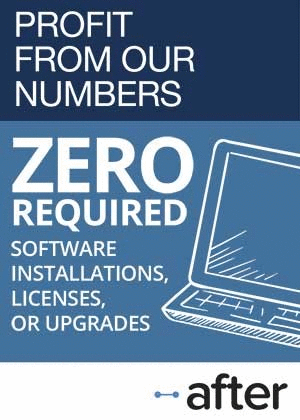Computer Supplier Warranties:Unlike in the automotive industry, computer makers are not trying to reduce their warranty expenses by shifting more of the burden onto suppliers. Instead, both OEMs and suppliers are reducing their costs by increasing product reliability.
The best way to reduce warranty expenses is to build a better product, which doesn't break as often and doesn't cost as much to repair. But there are other ways too, including the shortening of warranty durations, the tightening of terms and conditions, a reduction of fraudulent activity, and shifting the blame to suppliers.
In the computer industry, we've detected an ongoing reduction in warranty expense rates. And while some specific vendors such as the disk drive makers are shortening their warranties to cut costs, the overall reason behind this trend seems to be dominated by the building of better products.
One thing we haven't seen any evidence of is an effort to shift warranty costs to suppliers. That doesn't mean it's not happening. It just hasn't yet shown up in the statistics, as it has so prominently in the automotive industry.
Other Industries
We looked at OEM-supplier warranty metrics in the automotive industry in the September 13 newsletter, and in the aerospace industry in the September 20 newsletter. Our aim was to see if the OEMs paid a greater share of warranty expenses than their suppliers, and also if those expenses represented a larger share of their sales revenue.
In the automotive industry, that seems to be the case. The OEMs paid 80% to 90% of the total industry's warranty expenses, and those expenses consumed roughly 2.5% of their sales. In contrast, their suppliers paid 10% to 20% of the total, and their expense rate was closer to 0.5% of sales.
In the aerospace industry, however, the OEMs paid only 25% to 45% of the total industry expenses, and both the OEMs and their suppliers ended up spending about one percent of sales revenue on warranty.
We also found that the automotive OEMs were cutting their warranty expenses over time, partly by making a better product, and partly by demanding more reimbursements from their suppliers. But in the aerospace industry it seemed to be the suppliers who were reducing their warranty expenses by making a better product, while the OEMs continued with business as usual.
The computer industry looks to be somewhere between these extremes. Like their automotive peers, the computer OEMs have reduced their warranty expenses dramatically over time. But there's no evidence they're shifting more of their expenses to their suppliers in the disk drive or semiconductor industries. Instead, it looks like they're all improving together.
Three Industry Segments
Let's begin with a tally of the amount of claims paid by three different electronics industry sub-groups. Over the past ten years, we've been tracking 24 companies that are (or were) computer OEMs, 42 companies that sell disk drives or data storage systems, and 158 companies that make semiconductors or printed circuit boards.
For the analysis this week, the number of companies counted in each category is somewhat greater than usual. Some of the companies, such as Honeywell International Inc. and Kimball International Inc., are usually counted in other industry categories, because they're only partially in the high-tech electronics business. But just for this week, we're adding them in to make these lists as comprehensive and inclusive as possible.
In Figure 1, two trends seem obvious. First, the amount of claims paid by the computer companies didn't really go down during the recession. And second, the amount they've been paying in claims per quarter for the past two years has been gradually escalating.
Figure 1
U.S. Computer Industry
Warranty Claims Paid, 2003-2012
That escalation comes as no big shock if you consider that it's almost all coming from Apple Inc., which is expanding its mobile phone business dramatically. We covered this trend in the September 6 newsletter, so we won't repeat it again here. But the main point is that while Apple's warranty costs are soaring, so are its sales. And because they're soaring in proportion to one another, warranty expenses are no more of a burden to the company now than they were five years ago.
Less obvious in Figure 1 is the relative stability of claims paid by the data storage and semiconductor companies. The semiconductor companies have paid out roughly $250 million per quarter in warranty claims for most of the past ten years. The data storage companies have paid out about $150 million per quarter. That hasn't really changed much over the past decade. In fact, neither group saw a meaningful drop in claims payments, even during the recent recession.
Reducing Accruals
The three groups did, however, cut their warranty accruals significantly during the recession, as can be seen in Figure 2. Computer OEMs hit bottom in the third quarter of 2009. Semiconductor and printed circuit board manufacturers hit bottom in the second quarter of 2009. But for some reason, the disk drive companies didn't reach their minimum until the middle of 2010.
Figure 2
U.S. Computer Industry
Warranty Accruals Made, 2003-2012
Accruals have also been more volatile than claims payments. Notice that in the fourth quarter of the year, the OEMs seem to add a little extra to their accrual totals. This could be tied to the home computer industry and its sales during the holiday season. More sales means more accruals.
In the September 6 newsletter, we explained that accruals surged at Apple by more than $400 million in the fourth calendar quarter of 2011, but have dropped back down to normal in recent months. So that explains the source of the spike in Figure 2. But it doesn't explain its cause.
But there are spikes in other quarters as well, and not only for the OEMs. For instance, the semiconductor makers have allowed their accruals to exceed $300 million during four of the 38 quarters for which we have data. And three of those four were third quarters of their respective years. For the data storage industry, the highest quarterly totals came back in late 2004 and early 2005.
Close to Long-Term Averages
However, it's much the same pattern as with claims: there are rises and falls, but the totals remain close to their long-term averages. There's no evidence that either claims or accruals are being reduced, at least in terms of raw dollars.
For the half-year ended in June 2012, claims payments are up considerably for the computer OEMs and disk drive makers, but are down slightly for the semiconductor companies. During the same period, accruals are up for the disk drive companies but are down for the other two groups.
With warranty reserves, there's once again evidence of an Apple-driven increase in the recent totals. But for at least seven of the ten years covered by Figure 3, the totals have more or less stayed the same.
Figure 3
U.S. Computer Industry
Warranty Reserves Held, 2003-2012
We stretched the vertical scale as much as possible in Figures 1 through 3 in order to better show the changes, or lack thereof. But even at this scale, it's a little hard to see the gradual expansion of reserves in all three industry sectors. All three groups, for instance, saw their warranty reserve balances hit new highs in either late 2011 or early 2012.
The computer OEMs set a record back in late 2003 that stood until early 2011, when warranty reserves exceeded $4.8 billion for the first time. Now, thanks to Apple, they're closer to $5.5 billion.
The data storage companies saw their reserves peak in 2008, and then watched them fall for the next three years. But then suddenly in the first half of 2012, they find themselves with more than $1 billion in their reserve funds for the first time ever.
The semiconductor companies also saw their reserves peak in 2008. But the downturn was much shorter-lived, ending in mid-2010. Since then, the group has never allowed their warranty reserve balance to drop below $1.2 billion.
Compared to Sales Revenue
Now, let's add in a fourth metric: product sales revenue. When we divide the claims payments and accruals totals by revenue figures, we can see what percentage of sales is going towards warranty expenses.
The claims and accrual rates for the three groups can be seen in Figure 4. Unlike in the aerospace industry, there is no overlap between the groups. Here, the OEMs always spend the highest proportion of their sales revenue on warranty expenses. And their suppliers always spend less.
Figure 4
U.S. Computer Industry
Average Warranty Claims & Accrual Rates
(as a % of product sales, 2003-2012)
It's more like the situation in the automotive industry, with one big difference. Here, all three groups are gradually reducing their expense rates over time, though the OEMs have made the most progress. Back in 2003, they were spending more than 3.5% of their revenue on warranty. Now, that rate is closer to 2.0%.
The data storage companies, meanwhile, have cut their claims and accrual rates from around 2.2% back in 2003 to around 1.2% in 2012. And the semiconductor companies have dropped their averages from 1.1% back in 2003 to 0.7% in 2012. In other words, unlike in the automotive industry, expenses weren't merely shifted from OEM to supplier. Instead, all three groups found ways to reduce their warranty expenses.
Share of the Total
Finally, to confirm that there is in fact no net shift under way in the computer industry, we've fitted the industry's data into a chart that quite clearly shows that shift from OEM to supplier in the automotive industry. In Figure 5, we took the data from Figure 1, and set it equal to 100%. So no matter what the total in dollars, the chart shows the percentage of that total paid by each group.
In the automotive industry, we saw how the OEMs' share had declined from just under 90% to just over 80% after the OEMs increased their efforts to secure more reimbursements from their suppliers. In the aerospace industry, there really wasn't much change until Boeing recently began to increase its warranty accruals.
In the computer industry, there's really not much change at all. The OEMs pay roughly 75% of the total in any given quarter; the data storage companies pay about 10%; and the semiconductor companies pay about 15%. Their shares go up and down a bit, but never by more than a few percentage points. Over the past decade there really hasn't been much change in this chart.
Figure 5
U.S. Computer Industry
Warranty Claims Paid, 2003-2012
(OEMs' & Suppliers' Share of the Total)
We could add in more high-tech categories such as telecom equipment or medical devices, and the result would likely be the same. In the electronics industry, the trend is towards gradual improvement and reduction of warranty expenses, no matter where you fit into the supply chain. There may be contention between OEMs and their suppliers, but it hasn't yet translated into one side trying to shift warranty costs to another.
There are plenty of similarities between the automotive and computer industries, but the latter is not copying the former in terms of trying to increase supplier reimbursements. Instead, all parties seem to be finding ways to cut warranty costs proportionately, so they're all seeing lower claims and accrual rates than before.
|













